Course
Claude Code is an agentic coding tool developed by Anthropic that operates directly in the terminal, assisting developers in refactoring, documenting, and debugging code efficiently. By understanding the entire codebase, Claude Code helps simplify workflows, making it a powerful tool for software development.
In this tutorial, I’ll explain how to use Claude Code to improve software development workflows by refactoring, documenting, and debugging code. Specifically, we will:
- Refactor a file from the supabase-py repository to improve code readability and maintainability.
- Add documentation and inline comments to improve understanding of the existing codebase.
- Identify and resolve errors using Claude Code’s debugging capabilities.
You will learn how to integrate Claude Code into your development process for a more efficient and automated experience. Before we start, make sure to also check our short video coverage of Claude 3.7 Sonnet and Claude Code:
What Is Claude Code?
Claude Code is a tool that operates directly in your terminal, understanding your codebase and assisting with development tasks using natural language commands. By integrating with your development environment, Claude Code eliminates the need for additional servers or complex setups, allowing developers to focus on writing and improving code.
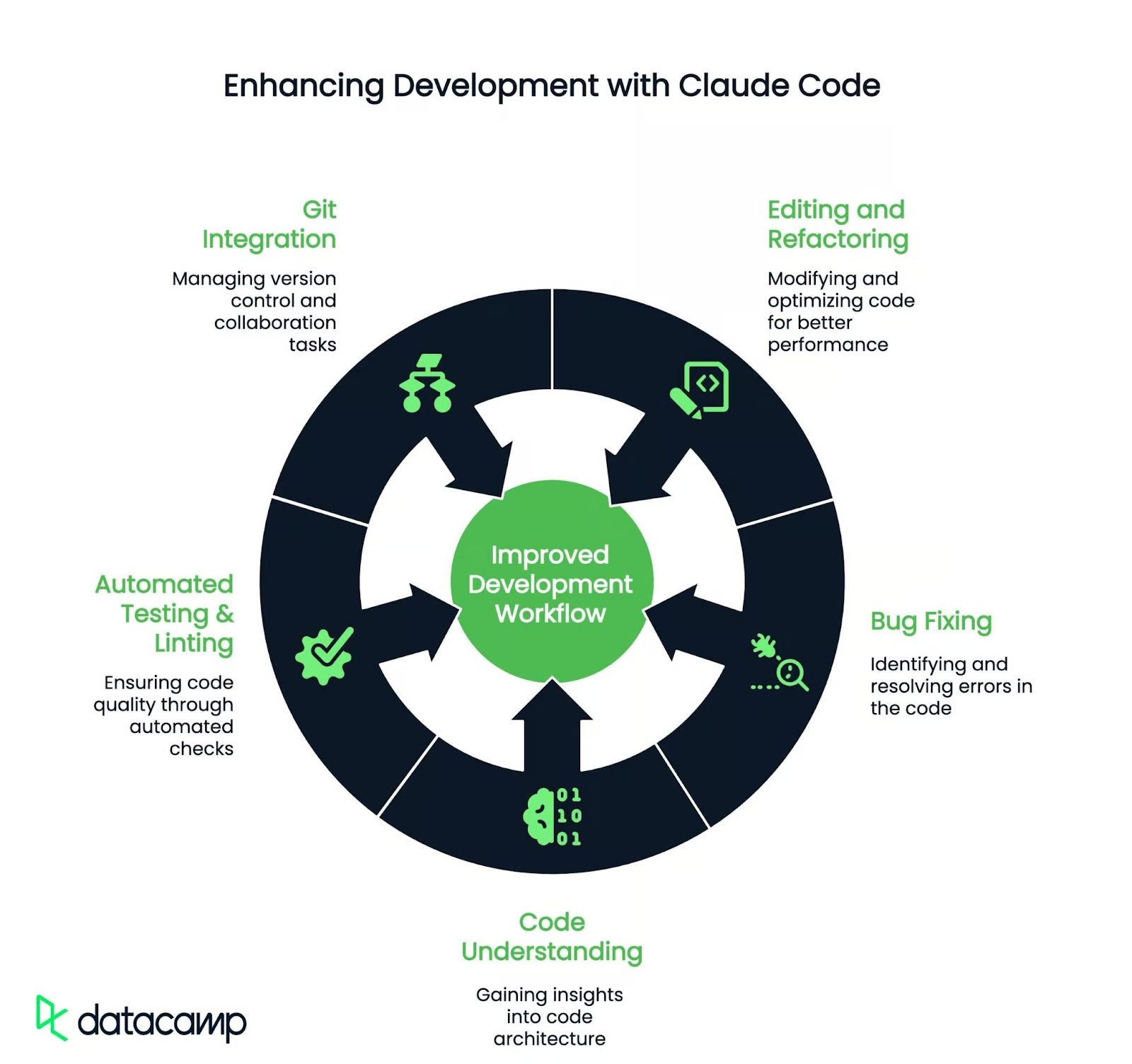
Here are a few key capabilities of Claude Code:
- Editing and refactoring: Modify, optimize, and enhance your codebase with AI-powered suggestions.
- Bug fixing: Identify and resolve errors, missing dependencies, and performance bottlenecks.
- Code understanding: Ask questions about your code’s architecture, logic, and dependencies.
- Automated testing & linting: Execute and fix failing tests, run linting commands, and improve code quality.
- Git integration: Search through git history, resolve merge conflicts, create commits, and generate pull requests effortlessly.
Whether working on an open-source project or managing enterprise-level codebases, Claude Code can help you with intelligent automation that adapts to your coding style and project requirements. Here are some ideal users for this service:
- Software Developers: Improving code quality and maintainability.
- Open Source Contributors: Understanding and enhancing unfamiliar codebases.
- DevOps Engineers: Automating code review and linting tasks.
Claude Code now uses Claude Sonnet 4.5, meaning you can use the same model Anthropic's researchers and engineers use right in your terminal, or build AI agents using the Claude Agents SDK.
Multi-Agent Systems with LangGraph
Let’s get started with our hands-on project.
Step 1: Setting Up Claude Code
Once you are off the waitlist, the Anthropic team provides you with a link to authenticate and run Claude Code locally.
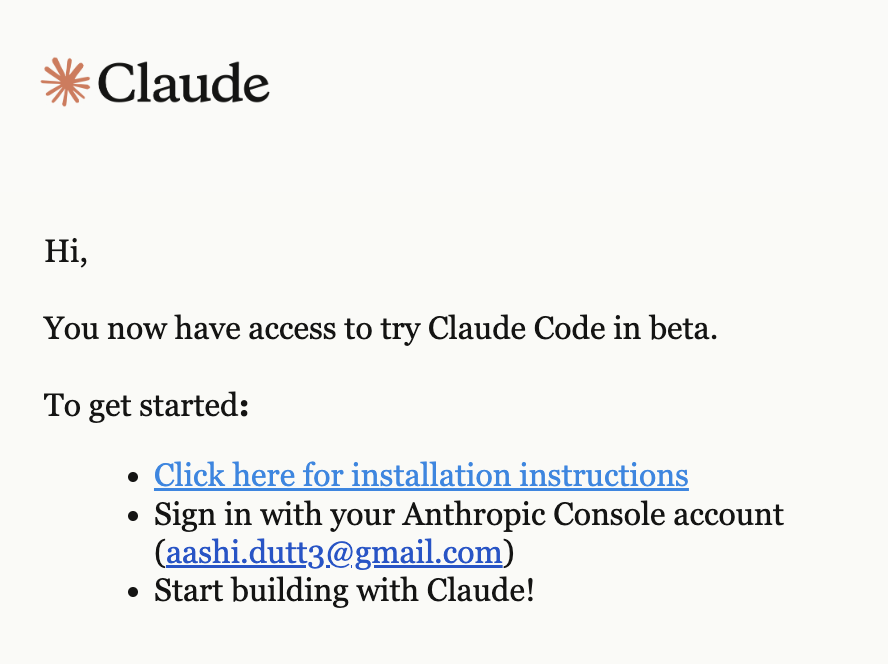
This redirects you to connect your Anthropic account to Claude Code. Authorize the connection, and you’re done. Ensure that your account has an active billing setup.

Next, simply run the following command on your terminal.
npm install -g @anthropic-ai/claude-codeThis command installs Claude Code on your machine. Once installed, navigate to your project directory and start Claude by running:
cd your-project-directory
claude
Now, Claude Code is ready to use.
Step 2: Set Up Development Environment
For this demo, I’ll use the Supabase Python library supabase-py, an open-source Python client for interacting with Supabase, a backend-as-a-service built on PostgreSQL. Supabase provides a suite of tools, including authentication, real-time subscriptions, storage, and auto-generated APIs.
Let’s begin by cloning the repository and setting up our development environment.
1. Open your terminal, navigate to the directory where you want to clone the Supabase-py repository (e.g cd Desktop), and run the following command:
git clone https://github.com/supabase/supabase-py.git
cd supabase-py2. Next, create a virtual environment and install the required dependencies by running the following commands in your terminal one at a time
python3 -m venv env
source env/bin/activate # On Windows, use ./env/Scripts/activate
pip install -e .Your Python environment is now set up with all the necessary dependencies to run the Supabase library, and your repository is ready to be explored.
Step 3: Identify Areas for Contribution
A great way to contribute is by exploring the Issues tab on GitHub. In the Supabase repository, I identified an issue in client.py related to code readability, structure, and lack of meaningful comments.
Here is what we are going to do with Claude Code:
- We’ll refactor the code to enhance readability, maintainability, and structure.
- Add meaningful docstrings and inline comments to clarify the purpose of different components.
- Identify and fix bugs by analyzing issues and other potential errors.
Step 4: Experimenting With Claude Code
Since we are already in the supabase-py folder, navigate to the supabase directory containing the client.py file and run Claude Code:
cd supabase
claude
Claude Code now has access to every file and folder within the Supabase-py folder. Now, let’s experiment.
Refactoring code
As part of improving the Supabase Python SDK, let's refactor the client.py file to enhance readability, maintainability, and organization. Simply enter the following prompt in the command line:
Prompt: Refactor the code in the client.py file located in the Supabase folder.
Claude will ask for confirmation before proceeding. Press Enter to approve the changes. Once complete, Claude Code will update the file, display the modifications in the terminal, and provide a summary of the changes made.
Using Claude Code, we applied the following improvements to client.py:
- Organized imports: Claude Code grouped related imports into logical sections (auth errors, API types, function errors), renamed imports for clarity, and removed redundant aliases for consistency.
- Enhanced readability: It added section comments to classify imports and removed duplication in the
__all__list for cleaner organization. - Simplified client options: It also reduced multiple lines by combining similar imports into a single statement.
Here is a side-by-side comparison of original and refactored code.
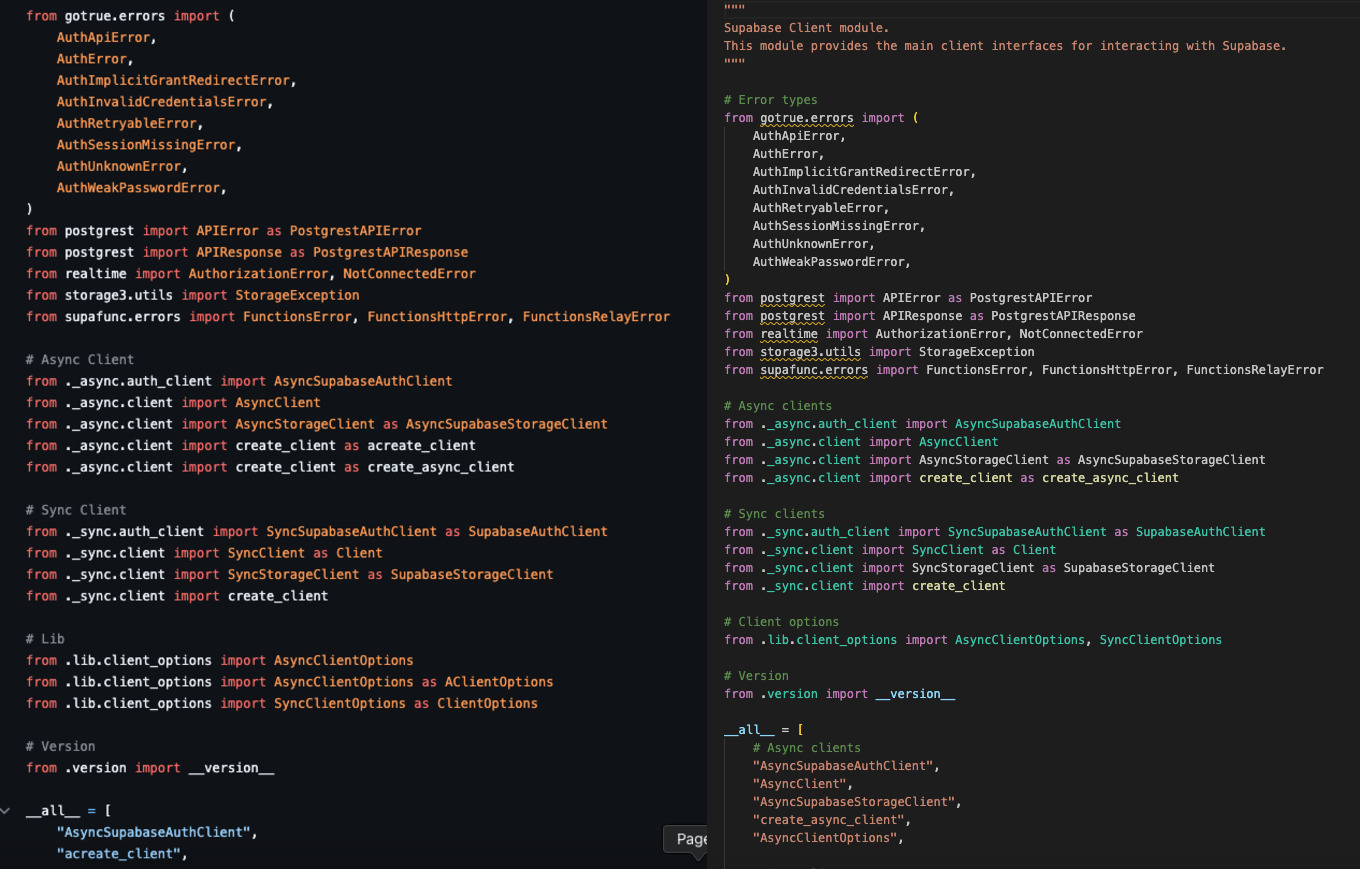
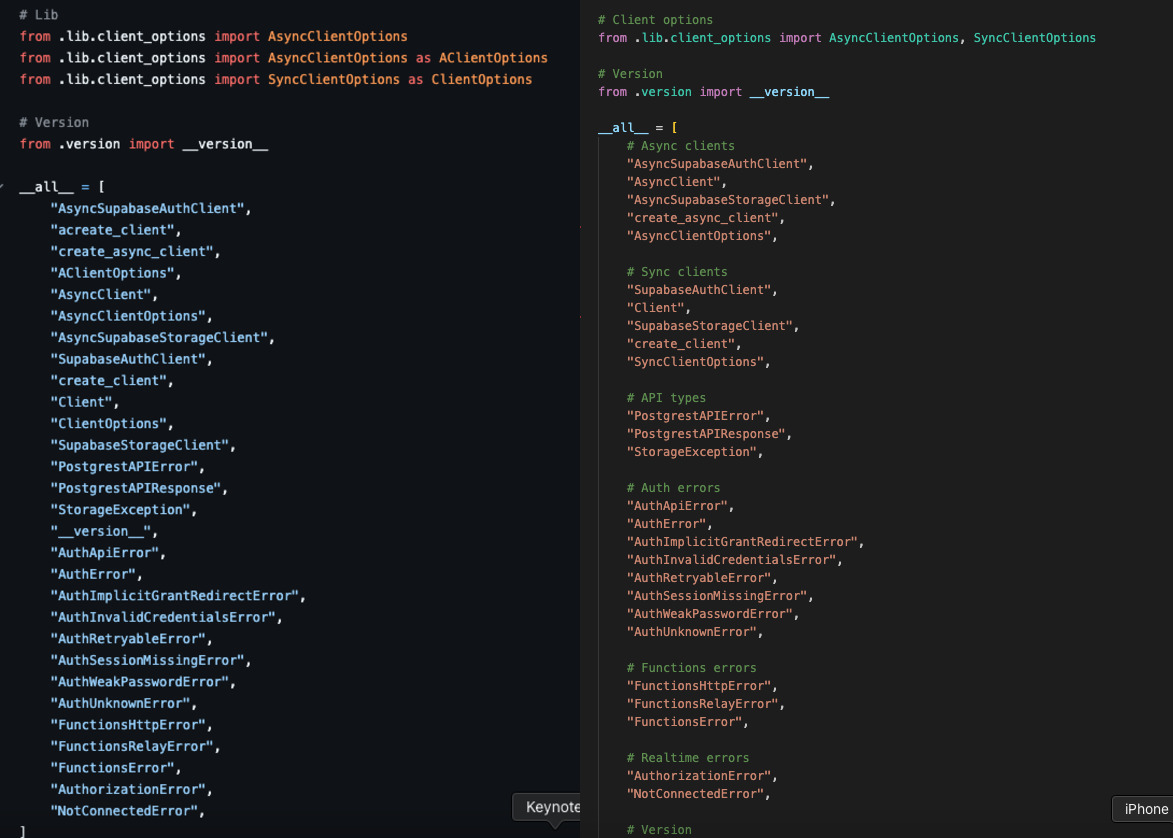
Documenting code
In addition to refactoring, Claude Code is a powerful tool for generating, enhancing, and standardizing code documentation. It can identify undocumented sections, generate structured docstrings or comments, and ensure compliance with project documentation standards.
We used Claude Code to improve the documentation in client.py, resulting in:
- Clear module-level docstrings explaining the purpose of the file.
- Detailed section comments categorizing imports (error types, client implementations, storage services).
- Inline comments to describe error types, client functions, and important components.
Here is a side-by-side comparison of refactored and documented code.
Prompt: Document the client.py code by adding comments to improve understanding.
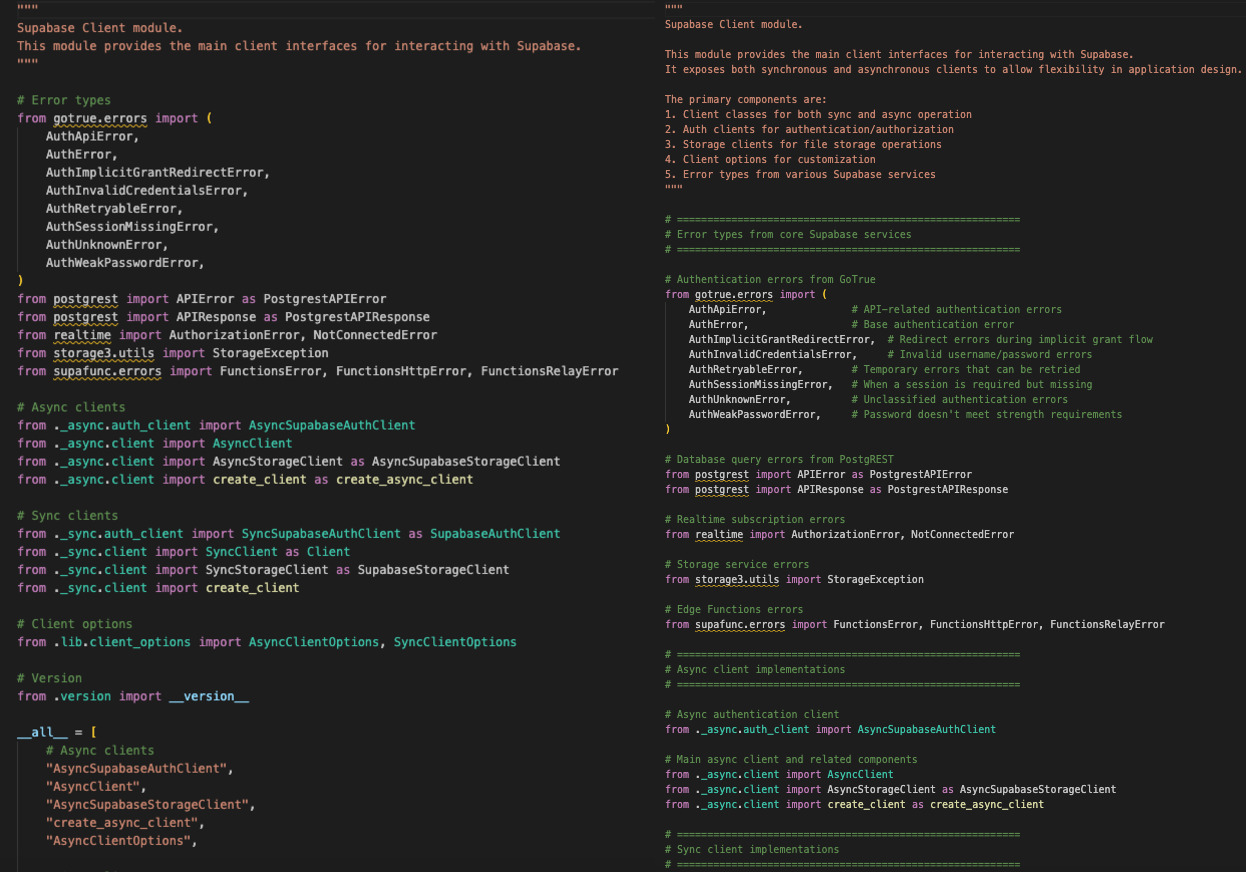
Once the documentation is added, you can verify its compliance with your project standards by prompting Claude:
Prompt: Check if the documentation follows our project standards.
Fixing bugs
Debugging can be time-consuming, but Claude Code makes it easier by analyzing error messages, identifying root causes, and suggesting fixes. Whether you're dealing with missing imports, runtime errors, or logic issues, it helps streamline the process by providing actionable solutions.
Here is how to use Claude Code for debugging:
- Identify the issue: Share the error message with Claude.
- Get fix recommendations: Ask Claude for possible solutions.
- Apply and verify the fix: Implement Claude’s suggestions and check if the issue is resolved.
Claude Code made the following arrangements to resolve import-related issues within the client.py file:
- Type ignore comments: Added
# type: ignorecomment to suppress IDE and type-checking warnings for unresolved imports. - Consistent error categorization: Claude Code ensured that error imports from authentication, database, storage, and functions are clearly grouped.
- Maintained code readability: Comments were added to indicate why certain imports were ignored rather than removing them.
Here is a side-by-side comparison of the original code and the fixed code.
Prompt: I see some bugs, such as 'Import gotrue.errors' could not be resolved. Help me fix all errors in client.py.
Note: Claude Code is still in preview, so instead of suggesting an import command to resolve the issue, it added an ignore comment to suppress the error. As it continues to improve, it will provide more precise solutions.
Claude Code Commands
Here are a few commands for you to try with Claude.
|
Commands |
Action |
|
/clear |
Clear conversation history and free up context |
|
/compact |
Clear conversation history but keep a summary in context |
|
/cost |
Show the total cost and duration of the current session |
|
/doctor |
Checks the health of your Claude Code installation |
|
/help |
Show help and available commands |
|
/init |
Initialize a new CLAUDE.md file with codebase documentation |
|
/bug |
Submit feedback about Claude Code |
|
/review |
Review a pull request |
I also recommend checking the tutorials Antrophic posted here.
Conclusion
In this tutorial, we used Claude Code to refactor, document, and debug a file in Supabase Python SDK. We improved code readability, added structured documentation, and resolved import issues. By integrating Claude Code into your workflow, you can streamline development and enhance code quality. As it evolves, it will offer even more precise solutions—try it on your own projects and see the impact!
To be up to date on the latest AI news, I recommend these blogs:

I am a Google Developers Expert in ML(Gen AI), a Kaggle 3x Expert, and a Women Techmakers Ambassador with 3+ years of experience in tech. I co-founded a health-tech startup in 2020 and am pursuing a master's in computer science at Georgia Tech, specializing in machine learning.

